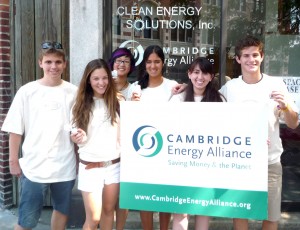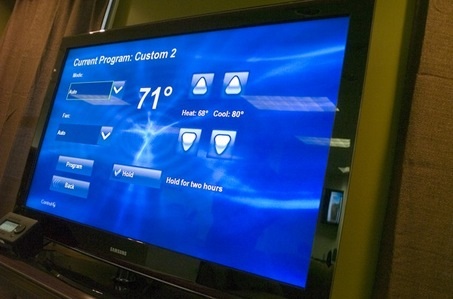
CEA canvassing interns: Trevor, Laurence, Stephanie, Mira, Danit, Federico
- The City of Cambridge Facade Improvement Program provides technical and financial assistance to property owners or tenants seeking to renovate or restore commercial building exterior facades.
- The City of Cambridge Better Retail Practices Program helps Cambridge retailers and restaurant owners improve their establishments’ interior appearance, marketing, advertising, and operations.
- New Generation Energy works with green-minded individuals, corporations, and foundations to develop funds to help support green energy upgrades for community nonprofit organizations.
- The Sustainable Business Leader Program assists businesses in Boston and Cambridge to become more sustainable by offering technical, hands-on assistance that is affordable, actionable and practical.
In previous residential canvasses, the numbers of buildings reached has been substantial. Through the efforts from Northeastern University’s Summer Discovery Internship program as well as the Mayor’s Summer Youth Employment Program, the Cambridge Energy Alliance will reach an estimated 1,000 small businesses by the completion of the campaign– July 22nd. These students range from age 14 to 18 years of age, and have come from both nearby (Cambridge) and far (UK, China, Nicaragua, California, and New Jersey) to make a real difference in this community, while gaining experience that they will surely employ in future ventures.
This campaign is especially significant due to the nature of the target audience. Eighty percent of energy used in Cambridge goes to buildings, and 67% of energy used in Cambridge goes to commercial use. Reducing the commercial energy used by implementing efficiency measures from simply replacing incandescent lighting with CFL bulbs to improving heating and cooling systems within businesses will go a long way toward reducing Cambridge’s overall carbon footprint.
The CEA interns will be out in the field Monday-Thursday from 1pm-3:30pm. So that you may be on the lookout for their friendly faces when they’re in your area, here’s the tentative schedule:
July 7th: Inman Square & Cambridgeport
July 8th: North Cambridge
July 12th: Leslie & Porter Square
July 13th: Harvard Square & Church Street
July 14th: Mt. Auburn & Brattle Square
July 15th: Dana Hill, Bow Street, & City Hall
July 19th: Central Square & Lafayette
July 20th: Concord Ave, Huron, & Strawberry Hill
July 21st: East Cambridge
July 22nd: Kendal/Brookline/Sherman/Broadway







